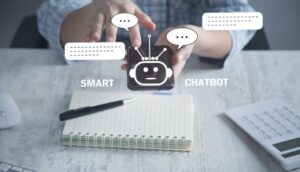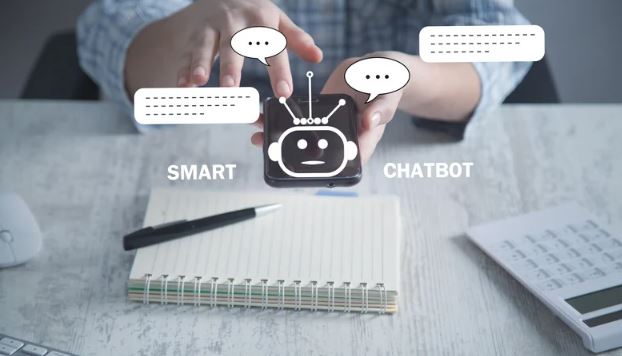Artificial intelligence (AI) has become an integral part of our everyday lives, shaping how we interact with technology, access information, and make decisions. From virtual assistants and chatbots to personalized recommendations and predictive analytics, AI-powered technologies are transforming industries and enhancing the way we live, work, and communicate. In this comprehensive guide, we’ll explore the role of AI in various aspects of daily life, its applications across different sectors, and the impact it has on society.

Understanding Artificial Intelligence
What is Artificial Intelligence?
Artificial intelligence refers to the development of computer systems capable of performing tasks that typically require human intelligence. These tasks include understanding natural language, recognizing patterns, solving problems, and making decisions. AI systems learn from data, adapt to new inputs, and improve their performance over time, making them incredibly versatile and powerful tools.
Types of Artificial Intelligence
1. Narrow AI:
Narrow AI, also known as weak AI, is designed to perform specific tasks within a limited domain. Examples of narrow AI include virtual assistants like Siri and Alexa, as well as recommendation systems used by streaming platforms and e-commerce websites.
2. General AI:
General AI, also known as strong AI or artificial general intelligence (AGI), refers to AI systems with the ability to understand, learn, and apply knowledge across a wide range of tasks, similar to human intelligence. While AGI remains a theoretical concept, researchers are working towards developing AI systems with broader capabilities.
Applications of Artificial Intelligence in Everyday Life
1. Virtual Assistants and Chatbots
Virtual assistants and chatbots have become ubiquitous in our daily lives, providing assistance and information across various platforms and devices. Examples include:
- Siri: Apple’s virtual assistant, accessible on iPhones, iPads, and Mac computers, assists users with tasks, answers questions, and performs actions based on voice commands.
- Alexa: Amazon’s voice-controlled virtual assistant, integrated into devices like the Echo smart speaker, helps users with tasks, controls smart home devices, and provides information and entertainment.
- Chatbots: Chatbots are AI-powered conversational agents used by businesses to provide customer support, answer queries, and automate interactions on websites and messaging platforms.
2. Personalized Recommendations
AI algorithms analyze user data and behavior to deliver personalized recommendations for products, services, content, and experiences. Examples include:
- Netflix: Netflix uses AI-powered recommendation algorithms to suggest movies and TV shows based on users’ viewing history, preferences, and ratings.
- Amazon: Amazon’s recommendation system analyzes users’ browsing and purchase history to suggest products they may be interested in, improving the shopping experience and driving sales.
- Spotify: Spotify’s recommendation engine uses AI to create personalized playlists, recommend music based on users’ listening habits, and surface new tracks and artists.
3. Predictive Analytics
AI-powered predictive analytics leverage historical data and machine learning algorithms to forecast future trends, behaviors, and outcomes. Examples include:
- Weather Forecasting: Meteorological agencies use AI algorithms to analyze weather data and satellite imagery to predict weather patterns, storms, and natural disasters.
- Financial Markets: AI algorithms analyze market data, news articles, and social media sentiment to predict stock prices, market trends, and investment opportunities.
- Healthcare: AI-powered predictive analytics help healthcare providers identify patients at risk of developing certain conditions, predict disease progression, and personalize treatment plans.
4. Smart Home Devices
AI-enabled smart home devices automate and optimize various household tasks, enhancing convenience, comfort, and energy efficiency. Examples include:
- Smart Thermostats: Devices like the Nest Learning Thermostat use AI algorithms to learn users’ temperature preferences and adjust heating and cooling settings accordingly, saving energy and reducing utility bills.
- Smart Appliances: AI-powered appliances, such as refrigerators, ovens, and washing machines, use sensors and machine learning algorithms to optimize performance, monitor usage patterns, and provide maintenance alerts.
The Impact of Artificial Intelligence on Society
Benefits of AI in Everyday Life
- Enhanced Convenience: AI-powered technologies simplify tasks, automate processes, and provide personalized experiences, enhancing convenience and efficiency.
- Improved Decision-Making: AI algorithms analyze vast amounts of data to provide insights and recommendations, helping individuals and businesses make informed decisions.
- Increased Access to Information: AI-powered search engines and recommendation systems provide access to a wealth of information and resources, empowering users to learn, explore, and discover new content.
- Innovation and Economic Growth: AI drives innovation across industries, spurring economic growth, creating new business opportunities, and fueling job creation in fields such as data science, machine learning, and software development.
Challenges and Concerns
- Privacy and Data Security: AI systems rely on vast amounts of personal data, raising concerns about privacy, data protection, and the potential for misuse or unauthorized access.
- Bias and Fairness: AI algorithms may reflect and perpetuate biases present in training data, leading to unfair or discriminatory outcomes, particularly in areas such as hiring, lending, and criminal justice.
- Job Displacement: The automation of tasks and jobs by AI technologies may lead to job displacement and unemployment, particularly in industries heavily reliant on routine, repetitive tasks.
- Ethical and Regulatory Considerations: The development and deployment of AI raise ethical and regulatory considerations, including transparency, accountability, and the ethical use of AI in decision-making processes.
Conclusion
Artificial intelligence has become an integral part of our everyday lives, shaping how we interact with technology, access information, and make decisions. From virtual assistants and personalized recommendations to predictive analytics and smart home devices, AI-powered technologies offer numerous benefits and opportunities for innovation. However, they also pose challenges and concerns related to privacy, bias, job displacement, and ethical considerations. As AI continues to evolve and permeate various aspects of society, it is essential to address these challenges collaboratively and ensure that AI technologies are developed and deployed responsibly, ethically, and inclusively, for the benefit of all. By harnessing the power of AI responsibly, we can unlock its full potential to improve lives, drive economic growth, and shape a more equitable and sustainable future.



